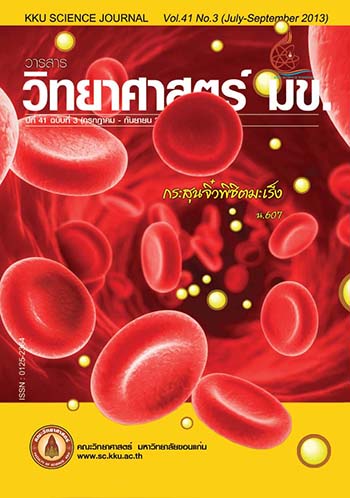Monodon Baculovirus: The Detection of Infection in Penaeus monodon
Main Article Content
Abstract
Monodon baculovirus (MBV) may cause reduction of growth rate and increase of culture period in shrimp. In addition, virus infection in the larva, post larva and juvenile stages shows a high rate of death to 90%. This has indicated very serious in many hatcheries. Diagnosis of MBV was originally accomplished by microscopic observation of inclusion bodies in hapatopancreatic cells via malachite green staining of hepatopancreatic squash mounts or hematoxylin and eosin staining (H&E) of hepatpancreatic tissue sections. Now a day, polymerase chain reaction (PCR) that is more sensitive molecular method has been reported. However, only the method of Belcher and Young (1998) has been found to be reliable for the detection of MBV from Australia, India and Thailand. Recently, other highly sensitive nucleic acid amplification methods were developed, including a real-time PCR method and a loop-mediated isothermal amplification (LAMP) method. Although PCR-based methods are used widely for the detection of MBV in the laboratory, they are not suitable for pond-side detection by farmers. Simpler immunological methods using monoclonal antibody have been developed into immunochromatographic strip test. Although less sensitive than PCR, antibody-based diagnostic methods trend to be simpler, less expensive and more amenable to use in less well equipped laboratories or by unskilled personnel in the field. It is sustainable to restrict a prevalence of MBV virus.
Article Details

This work is licensed under a Creative Commons Attribution-NonCommercial-NoDerivatives 4.0 International License.


